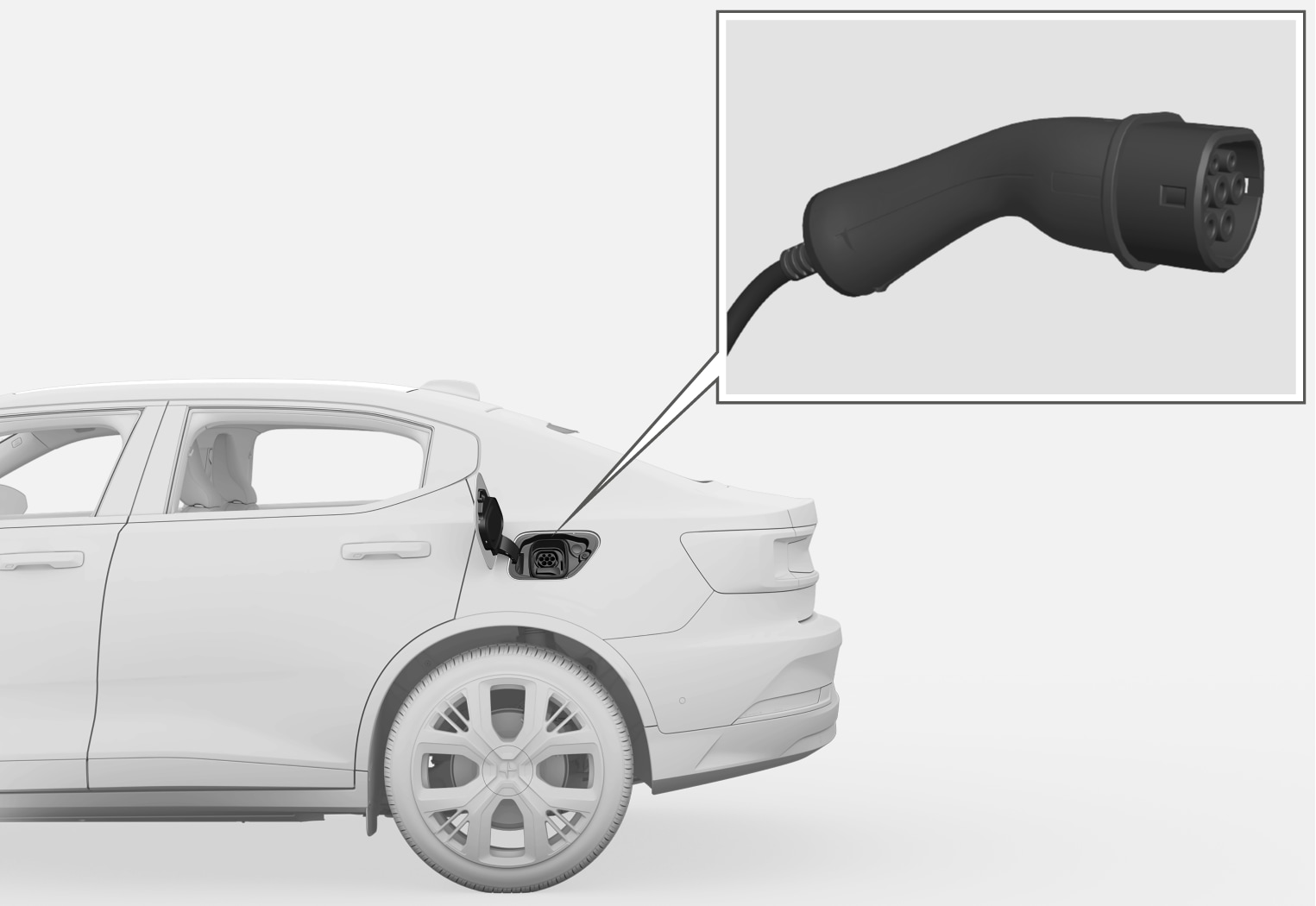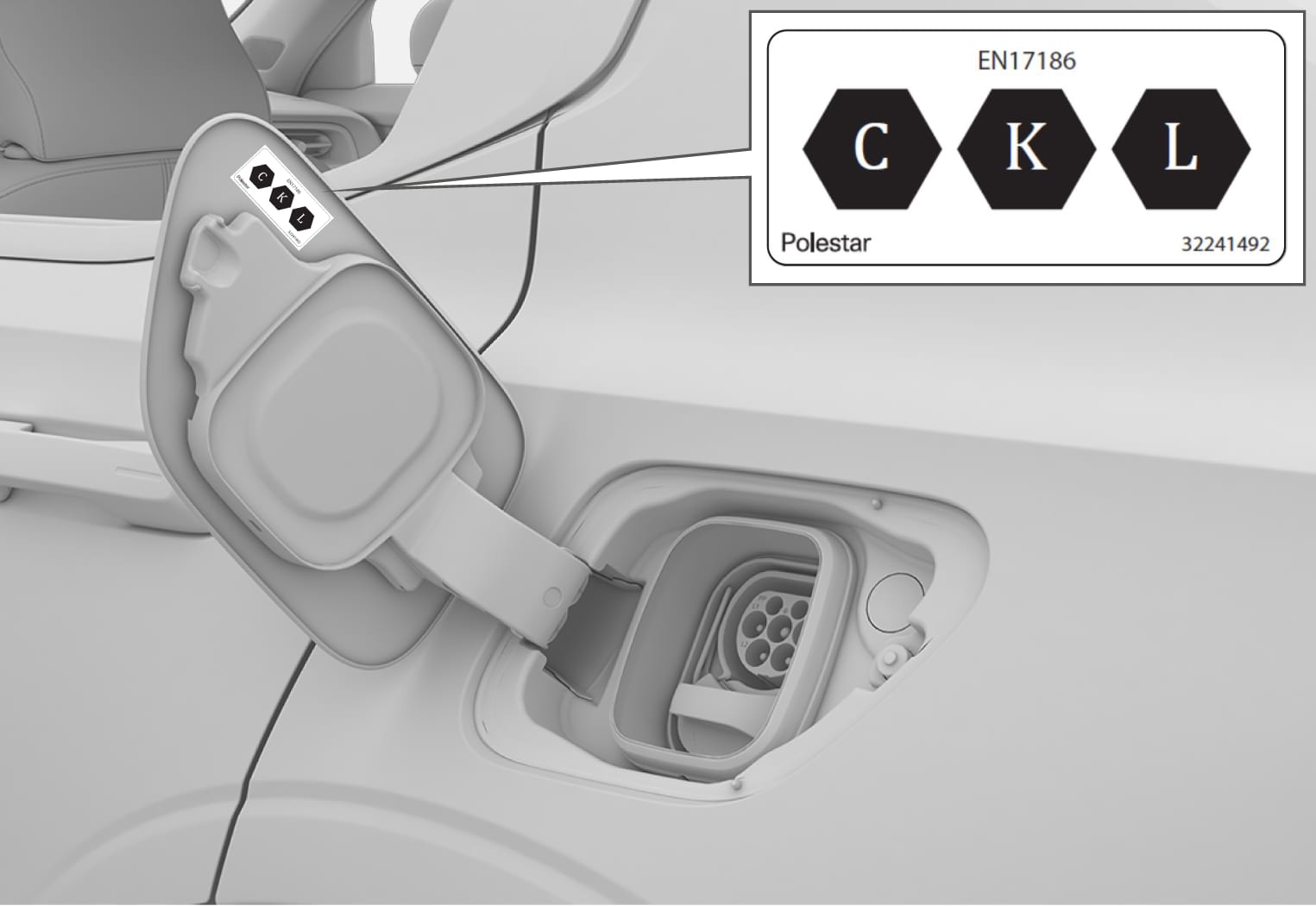Charging the high voltage battery
The high voltage battery is charged using a charging cable.
The battery can also be charged via charging stations with an integrated control device. The charging stations can be equipped with either a permanent charging cable or a socket where a special charging cable with a matching connector, known as a mode 3 charging cable, can be connected.
Fast charging
Besides charging via a 230 V socket (alternating current), the car supports fast charging with direct current via charging stations that support the CCS (Combined Charging System) standard. A higher charging power can normally be achieved by charging with direct current, and the charging time can therefore be reduced. The maximum charging power is normally achieved when the charge level of the high voltage battery is 0-80%. When the charge level increases, the power will be reduced in order to reduce wear.
Note
Warning
The time it takes for the high voltage battery to be charged is dependent on the charging power that is used.
Note
Warning
Charging cable handle and charging input socket

- Indicator on the charging cable's control unit.
- Indicator lamp in the car's charging input socket.
- Illustration and text in the driver display.
The 12 V battery is charged when the high voltage battery is charging and is interrupted when the high voltage battery is fully charged. It is not possible to drive the car while it is charging.
High voltage battery performance may be reduced if the temperature in the batteries is too low or too high.
Important
Decal on the inside of the charging hatch.

Choose charging that is approved for use in the car in accordance with the identifier1 on the inside of the flap for the charging input socket.